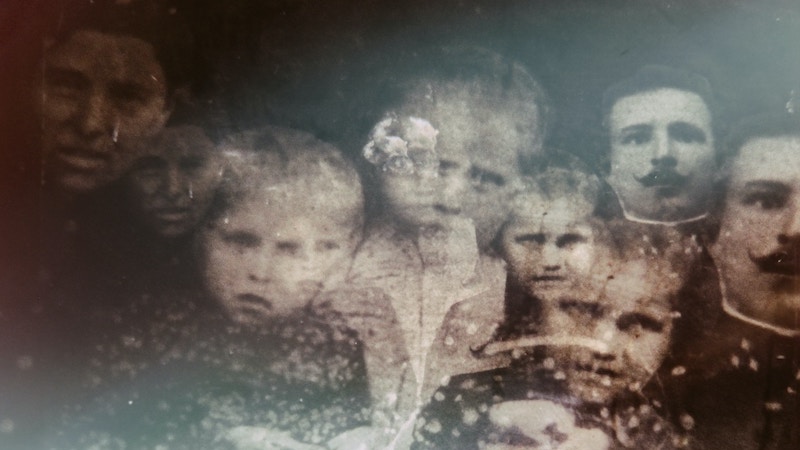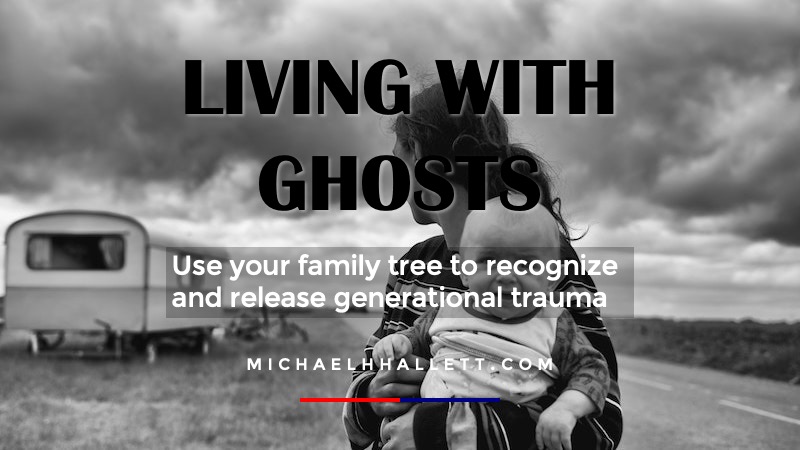Our ancestors tried to hide everything they were ashamed of
- 6 June 2023
- Posted by: Michael H Hallett
- Category: Generational trauma , Shame ,

One of the lessons I’ve learned about uncovering generational trauma is that our ancestors did everything they could, consciously and unconsciously, to hide what they were ashamed of. They tried to bury, play down, minimise, evade, and escape anything that diminished the social standing of the family. This included divorces, scandals, financial failures, or any semblance of not ‘doing one’s bit’ during the world wars.
Buried memorabilia
A case in point is my grandfather Harold Blackburn’s memorabilia from the pioneering days of British aviation. He was one of very few pilots before World War I.
When war broke out, he ‘joined up’ through the simple expedient of flying his aircraft, an Avro 504, into Roundhay Park in Leeds where a recruiting station had been set up. By war’s end he was a Wing Commander, mentioned in despatches four times and twice decorated for bravery.
After an affair and divorce shattered the family, my grandfather and mother moved to Jersey. In 1940, just before the Nazi invasion, they evacuated to the British mainland. My grandfather buried his amazing memorabilia in a potato pot in the garden.
They returned six years later and retrieved it. My mother married and had two children. We grew up in the flightpath of the Jersey airfield, surrounded by debris from the war. Yet of my grandfather’s pioneering aviation achievements and war deeds—nothing.
The memorabilia remained buried as if it were still in the potato pot. Only the occasional anecdote escaped to signal that something important had happened.
In the 1970s we emigrated to New Zealand. The memorabilia disappeared into a drawer or the back of a wardrobe. It only emerged when my mother passed it on to me shortly before she died. It was almost as if she moved to the other side of the earth, the furthest possible place from the scandal and still burning shame of her mother’s affair.
Old photographs
Family memorabilia provides clues to generational trauma both through what survives and what doesn’t.
In her memoir The Scarlet Sisters, Helen Batten writes: “The number of wedding photos that survive are in direct proportion to how popular the marriages were with the family.”
It makes perfect sense. Nobody wants to be photographed at a disapproved wedding. Few family members went. Few photographs were taken; fewer still survived. The past lives on not just in visible but in invisible forms.
It’s like the old double exposure photograph above. There are two stories, two overlapping stories. One, the visible story, the known story. The second, the emotional story, the story they were so ashamed of they tried to hide it.
Why did they hide what they were ashamed of?
I have a photograph from my grandfather’s wedding. On the back of it, many years later, my mother described it as “Father”—the word capitalised—“and his bride.” She dated it to 1913 yet his uniform and medal ribbons show it must’ve been taken after World War I.
She was so emotionally disconnected from the truth of her own family and her own life that she misidentified a photograph of her own parents’ wedding.
This is the power of shame, and this is why our ancestors tried to hide what they were ashamed of. It hurt, and any reminder of the past reignited that hurt.
Misidentified photographs lay smokescreens and oil slicks that hinder later genealogical research. In The Architect of Desire, Suzannah Lessard describes “the slick that was concealing from us the truths of our lives together and alone.”
My mother was swallowed up by that slick—and then she began to perpetuate it. The lie became her emotional truth because the truth was too painful to bear.
Understanding the dynamic that our ancestors tried to hide what they were ashamed of brings an entirely new lens to the process of genealogical research. For more information, check out my blog or my generational trauma course, Living With Ghosts.
ONLINE COURSE

Photo by Andras Kovacs on Unsplash
